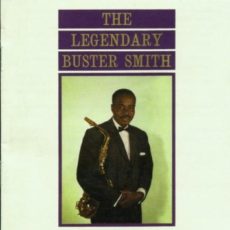
Daily Dose Of Jazz…
Buster Smith was born Henry Smith on August 24, 1904 Alsdorf, Texas, the third boy of five and earned the name “Buster” from his parents as he was an overweight baby when his mother gave birth. His early musical influences were his mother, and his father, who played guitar. At the age of four years, Buster and his brother Boston, a pianist, were playing organ, he played the keys and his brother stepped on the pedals. Soon thereafter, believing it would lead to a life of sin, his grandfather gave away the organ.
In 1919, Smith picked cotton for a week to earn himself the money to buy a $3.50 clarinet. He went on to learn to play several instruments by the time he was eighteen years old. Moving to Dallas in 1922, he joined the Voodie White Trio, playing alto saxophone and clarinet. The following year he began his professional career as an alto saxophonist with the medicine shows, though he had to play very loudly to draw in more customers. This experience defined his musical style, becoming known for being loud.
This period led to Oran “Hot Lips” Page inviting Smith to join his group, the Oklahoma City Blue Devils, in 1925. Over the next few years Buster wrote much of the group’s music, learning from banjo player Johnny Clark, writing lyrics with co-workers from the bank that he worked in.
As a Blue Devils he worked alongside Walter Page, Oran Page, Lester Young, Count Basie, Jimmy Rushing, and Emir “Bucket” Coleman. They toured the Kansas City area and the Midwest, playing jazz for a year, bringing all of its members into prominence. Basie and Page both left the group; and shortly afterwards so did Smith. He and Basie formed the Buster Smith-Count Basie Band of Rhythm, where the two innovated a louder style of jazz. Buster’s contribution to the unique sound was by using a tenor saxophone reed in his alto saxophone to achieve a louder, “fatter” sound. Young opted for a heavier reed, using a baritone saxophone reed on his tenor saxophone. This sound was later labelled the Texas Sax Sound.
Smith gained influence in the Texan music community and industry. He mentored saxophonist Charlie Parker during the 1930s, developing a father-son relationship. He played with a host of musicians including Duke Ellington, Ella Fitzgerald and Earl Hines but in 1941 he returned to Dallas and ceased touring but remained active in the local music scene. In the years that followed he wrote for jazz and blues bands, played often, and known as Professor Smith, taught many young Texan musicians, including Aaron “T-Bone” Walker and Red Garland among others. He also performed session work with Pete Johnson’s Boogie-Woogie Boys, Eddie Durham, Leo “Snub” Mosley, Bon and His Buddies, and the Don Redman Orchestra.
In the 1960s, Smith was involved in auto accident, his injuries causing him to give up the saxophone. Not to be dissuaded from performing he took up the bass guitar, led a dance band and played into the mid-Eighties with the Legendary Revelations. Alto saxophonist Buster Smith, who recorded only one album as a leader in 1959, passed away on August 10, 1991 of a heart attack in Dallas, Texas.
![]()
More Posts: saxophone


